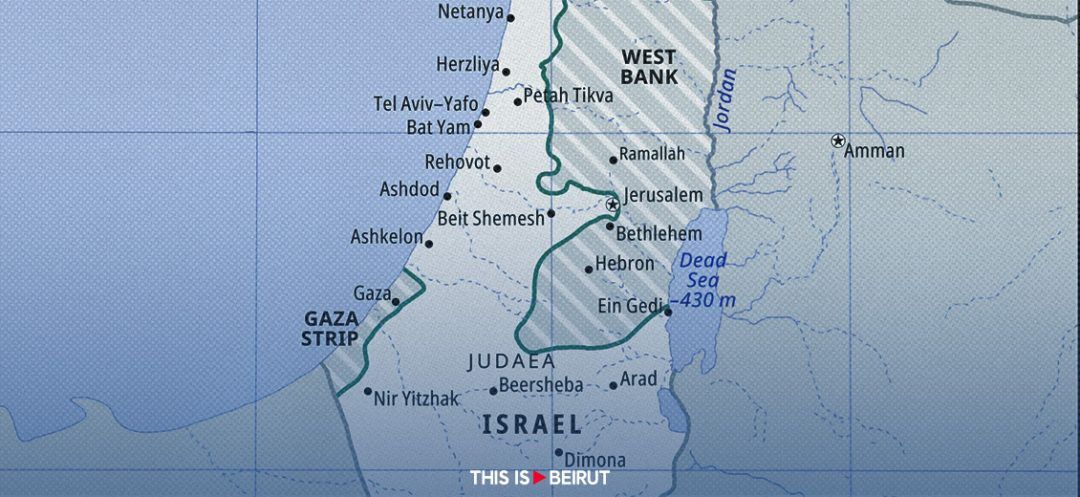- Home
- War in the Middle East
- Be it a One or Two-State Solution, the Challenge Is Double

Since the adoption in 1947 of the resolution to divide Palestine, the concept of a "two-state solution" was central in political discussions on ways to resolve the Arab-Israeli conflict. This notion undertook a significant turn after the 1967 war and became the focal point of peaceful negotiations, especially during two major events: the Madrid Conference (1991) and later the Oslo Accords (1993), in addition to other key milestones.
The essence of this solution lies in the mutual recognition between Palestinians and Israelis, without negating the existence of either, and moving towards building a peaceful settlement. This in turn would pave the way for the establishment of enduring peace, enabling both peoples to coexist and put an end to decades of bloody conflict. However, this option has reached an impasse in recent years due to many factors, including reluctance on the part of Israel to pursue peace, a sentiment echoed by successive Israeli governments that have shown little interest in embracing fundamental solutions. This mindset across various sectors of Israeli society is the outcome of pervasive political and ideological mobilization taking place in schools, universities, academic institutions and diverse community settings. This mobilization predominantly centers on the reinforcement of the Hebrew state's ideology, championing the vision of "Greater Israel."
Some choose to overlook the assassination of former Israeli Prime Minister Yitzhak Rabin, who "dared" to sign the Oslo Accords with Palestinian Liberation Organization leader Yasser Arafat in a ceremony in the White House, facilitated by the United States. The offender, a Jewish extremist named Yigal Amir, carried out the act in the heart of Tel Aviv during a peace celebration. Rabin, the first prime minister to be assassinated, paid the ultimate price for his dedication to a peace agreement.
The well-known agreement signed by Rabin fell considerably short of Palestinian national expectations. While Israel acknowledged the Palestinian Liberation Organization, the latter reciprocated by recognizing Israel's right to exist. However, a crucial legal difference arises between the two forms of recognition. State recognition is irrevocable, unlike the recognition of organizations and entities.
The Israelis succeeded in postponing negotiations on all sensitive issues at the core of Palestinian national demands. These included the future status of Jerusalem, the issue of refugees and their return to Palestinian lands, the borders’ delineation between the "two states," the settlements and security arrangements. However, the decision to defer discussions on these contentious matters for five years was unsuccessful, as it led to the fragmentation of the overall issue.
Most importantly, the belief that the Oslo Accords would set the stage for a two-state solution has not held true. Instead, Israeli dominance over Palestinian decision-making has taken a more dangerous turn after the agreement than it did before its signing. Today, a particularly troubling aspect is the unprecedented expansion of settlement activities throughout the West Bank, with estimates suggesting that the settler population has exceeded 800,000. Relocating them in other places in the event of a peaceful agreement would be quite challenging.
However, the trickiest issue is intricately tied to Jerusalem, the meeting point of the three major Abrahamic religions. Jerusalem has been undergoing a systematic process of Judaization that has profoundly altered its landscape, giving Israel control over various facets of the city. Israel, essentially, refuses to engage in serious discussions about the future of Jerusalem. Moreover, it firmly refuses to acknowledge the city – notably its eastern sector –, as the capital of the aspired Palestinian state.
Given these factors, achieving a two-state solution seems challenging. However, it still stands as a comparatively less complex option than the sporadically proposed one-state solution. This alternative, openly endorsed by small factions on both sides, fails to capture widespread attention or significant interest. If the focus shifts to a one-state solution, would it take the form of a secular state or one with dual nationality? Is there a viable path to success for either proposal? And can the two communities coexist under a single state amid the unprecedented surge of animosity and hatred?
The answer is not easy, and the issue is becoming more complex as the Israeli war on Gaza continues for more than three months now. Surprisingly enough, major global powers have yet to call for an end to the hostilities!
Read more




Comments